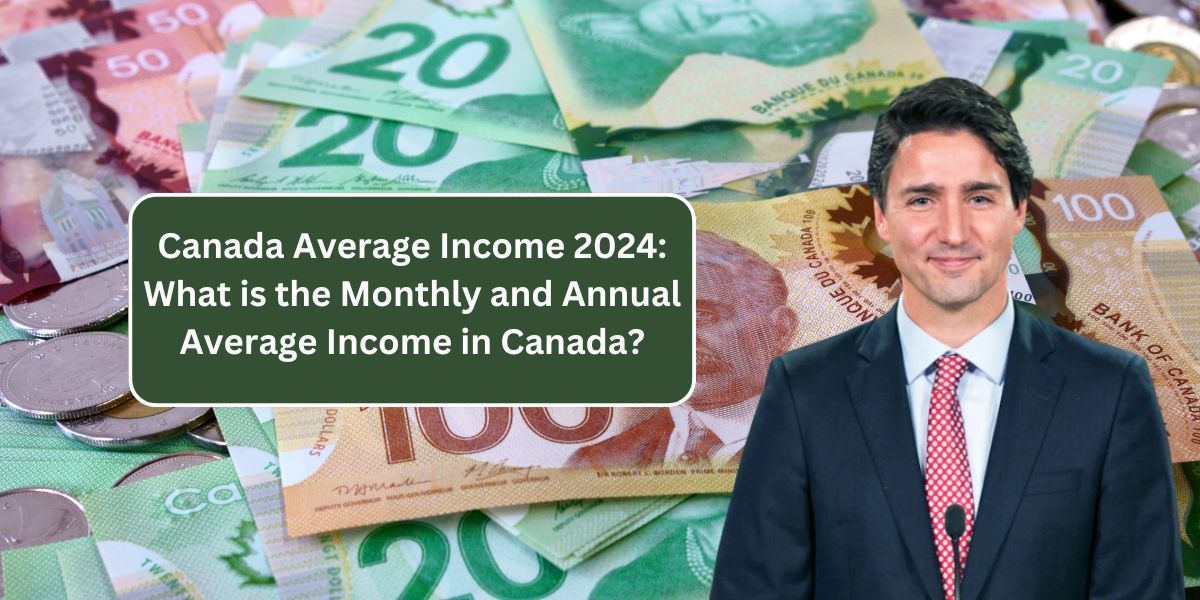In this article, we’ll explore the Average Income in Canada, including both monthly and annual figures. Understanding your average income is essential for managing your expenses effectively. This information can help you make informed decisions about financial planning and investments. Additionally, various banks in Canada offer Guaranteed Investment Certificates (GICs) for secure investment options.
Table of Contents
Average Income in Canada
The average income in Canada represents the total earnings of Canadians over a month or a year. Currently, the average annual income ranges from CAD $55,000 to $60,000. This figure is derived from various service sectors and reflects the country’s income distribution.
Last year, Canada ranked among the top 20 countries with the highest average income levels globally. Understanding average income is crucial for managing an effective and comfortable lifestyle.
| Province | Wages (P/Hr) |
| Alberta Minimum Wage | 15 CAD |
| Ontario Minimum Wage | 16.55 CAD |
| British Columbia Minimum Wage | 16.75 CAD |
| Manitoba Minimum Wage | 15.3 CAD |
| Nova Scotia Minimum Wage | 15 CAD |
| Yukon | 16.77 CAD |
| Nunavut | 16 CAD |
| Saskatchewan Minimum Wage | 14 CAD |
| Quebec Minimum Wage | Check Here |
Cost of Living in Canada
In Canada, maintaining a standard lifestyle can be costly. For a single individual not paying rent, the average cost of living is approximately CAD $996.10 per month. Couples typically face higher expenses, with monthly costs exceeding CAD $3,500. These expenses cover transportation, food, personal needs, and more.
The average income in Canada fluctuates annually, impacting the overall standard of living. Limited housing and labor supply have driven up living costs, necessitating higher earnings to manage expenses effectively. Notably, there is a significant cost difference between single individuals and couples.
| Irs Stimulus Checks |
| $1400 Stimulus Checks |
| Ctc Monthly Payments Schedule |
| $300 Child Tax Credit |
| Ctc Deposit Date Fixed |
Employment in Canada
The current employment rate in Canada stands at 62.1%, reflecting a gradual increase from previous years and contributing to a stronger GDP. In June, the unemployment rate was 5.4%, prompting the Government to implement measures for improvement. Recent data shows a slight decrease in unemployment to 5.28%, indicating positive progress. This information is sourced from the Labour Force Survey, which tracks overall employment and unemployment rates across the nation.
Service Sectors in Canada
Here is a list of key service sectors in Canada where people work and earn their living:
- Retail: Involves services related to the sale of merchandise.
- Small and Large Businesses: Includes various types of businesses offering essential products or services.
- Food Services: Provides basic food requirements and opportunities in the food industry.
- Transport: Comprises roles for drivers and transport professionals, with opportunities to obtain driving licenses.
- Personal Grooming: Covers beauty and grooming services, essential in people’s lives.
- Banking: Involves managing savings accounts and making profitable investments.
- Hospitality: Ensures comfortable accommodations for tourists and immigrants.
- Healthcare: A crucial sector providing medical services and care.
The revenue generated from these sectors contributes to both monthly and annual average incomes. Additionally, various schemes and programs support these industries and their workforce.
What is the Monthly and Annual Average Income in Canada?
In 2021, the average annual salary for employed Canadians was $59,300. This income supports their expenses, which are managed by the Canada Revenue Agency to ensure financial stability within the country.
The average wage is $22.50 per hour. Monthly income is calculated by multiplying the total number of working hours by this average hourly wage.
Sources of Passive Income in Canada
Many Canadians generate additional income by renting out their homes or vehicles, or through business investments and stocks. Opportunities for students and adults to earn income vary.
Overall, the average income in Canada reflects the citizens’ expenses, including living costs and emergency fund requirements. This data is adjusted based on these financial needs and living standards.




